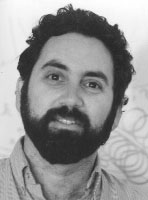
Abstract
Recent advances in photonics and directed energy systems now allow us to realize what was only a decade ago, simply science fiction. It is no longer. Spacecraft from fully-functional gram-level wafer-scale systems (“wafer sats”) capable of speeds greater than ¼ c that could reach the nearest star in 20 years to spacecraft for large missions capable of supporting human life with masses more than 105 kg (100 tons) that could reach speeds of greater than 1000 km/s can be realized. With this technology spacecraft can be propelled to speeds currently unimaginable with our existing propulsion technologies.
To do so requires a fundamental change in our thinking of both propulsion and our definition of what a spacecraft is. In addition to larger spacecraft, capable of transporting humans, we focus on “spacecraft on a wafer” that include integrated optical communications, imaging and spectroscopy systems, navigation, photon thrusters, radiation and magnetic field sensors combined with directed energy propulsion. Since the propulsion system stays “at home” the costs can be amortized over a very large number of missions. In addition, the same photon driver can be used for planetary defense, beaming energy to distant spacecraft, sending power back to Earth as needed, stand-off composition analysis, long range laser communications, SETI searches, and even terraforming. This would be a profound voyage for humanity, one whose non-scientific implications would be enormous. We will discuss a major new initiative surrounding this program.
For more information, see: http://www.deepspace.ucsb.edu/projects/directed-energy-interstellar-precursors
Biography
Philip Lubin is a professor of Physics at UC Santa Barbara whose primary research has been focused on studies of the early universe in the millimeter wavelengths bands as well as applications of directed energy including planetary defense, power beaming and relativistic propulsion. His group has designed, developed and fielded more than two dozen ground based and balloon borne missions and helped develop two major cosmology satellites. Among other accomplishments his group first detected the horizon scale fluctuations in the Cosmic Microwave Background from both their South Pole and balloon borne systems twenty years ago and their latest results, along with an international teams of ESA and NASA researchers, are from the Planck cosmology mission which have mapped in exquisite detail the structures of the early universe. He is a co-I on the Planck cosmology mission. His group has worked on applications of directed energy systems for both small scale single launcher solutions as well as large standoff systems for planetary defense and on applications to allow small relativistic interstellar probes. He is co-recipient of the 2006 Gruber Prize in Cosmology along with the COBE science team for their groundbreaking work in cosmology. He has published more than 300 papers.